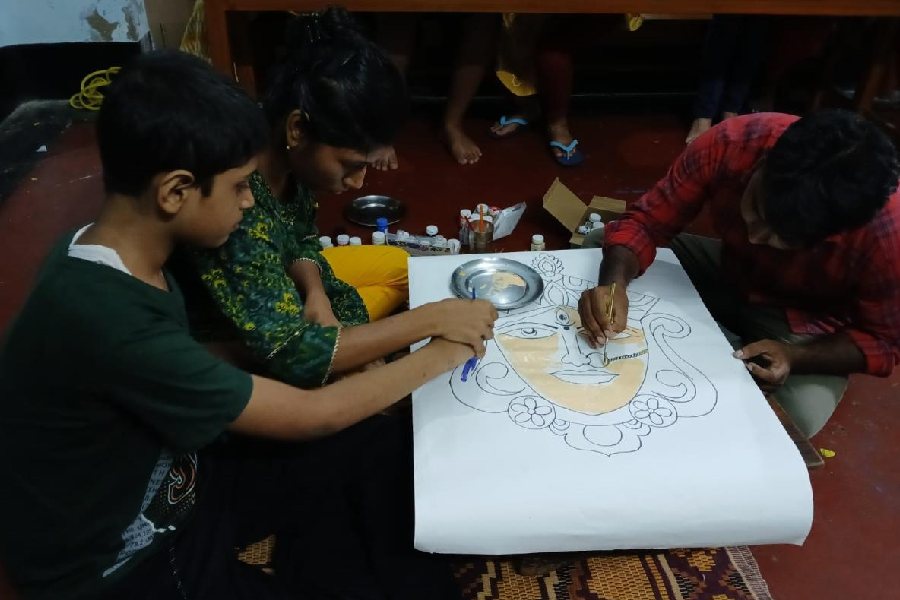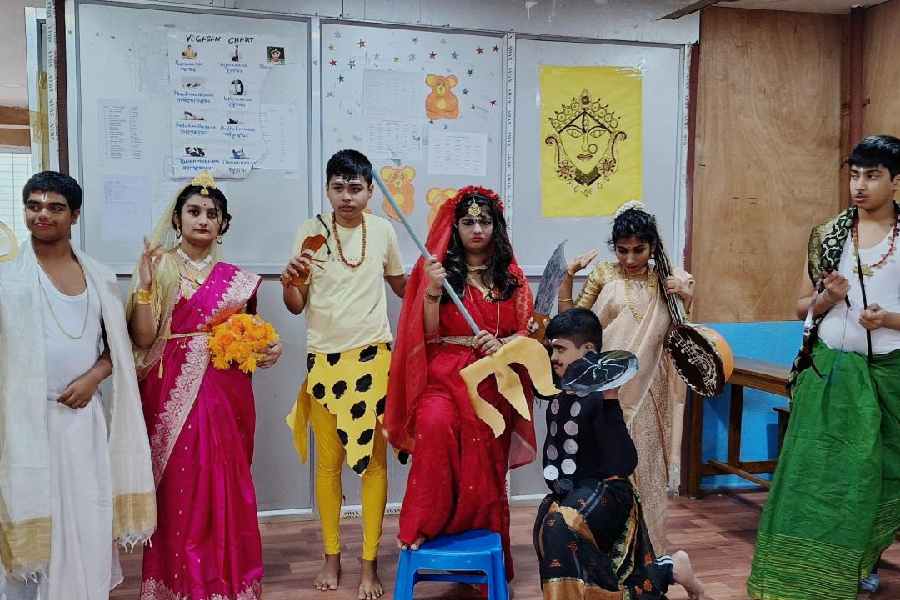A group of individuals with autism heralded Durga Puja this year by slaying the demon, a role-play meant to prepare them for the festive days ahead.
The sudden change in the environment with loud music, lights and crowds — a deviation from a routine — can be overwhelming for some individuals, said the head of a special school.
Senior students at the school, Bhabna, did a dance drama on Mahishashur Mardini and another set of children made posters of Goddess Durga.
The two activities were part of a familiarisation programme held on October 4, in the run-up to Bengal’s biggest festival. The preparations for the event began in the second week of September.
“Many of the children are not used to this change, which becomes overwhelming for them. They have to be made to understand, which cannot be done only by telling them or giving instructions. When they acted and drew posters, it became more understandable for them,” said Arunasis Adhikari, managing trustee of Bhabna.

Bhabna student draw a poster of Goddess Durga
Adhikari said children with autism are used to a certain routine and the few days of festivity are a disruption to that routine, which they have to be prepared to cope with.
What could be a familiar event for individuals without autism might not be so to those with autism, he said.
“This year it was more important because our children were confused by contradictions in the run-up to the festival. While there was a celebratory mood for Durga Puja, there were also protests (triggered by the RG Kar case), which were a contradiction to the celebrations,” said Sudeshna Chowdhury, the principal of the school.
“We have students whose parents are doctors and there is an environment of protest around them, too. An uncertain or unstable environment is confusing for them. We wanted them to understand that Durga Puja had arrived,” she said.
Chowdhury also said many children with autism are visual learners and parents have to spend time preparing them for an event through visuals.
“We tell them to mark the dates on the calendar, show them pictures of previous years when they visited pandals or small videos. These help them develop coping mechanisms in a changed environment,” said Chowdhury.
Swati Bhattacharya, the mother of a 14-year-old girl with autism, said every year she prepares her daughter for the festive season.
“I show her YouTube videos of lights and crowds. Initially, she used to be disturbed with lights and sound and would start crying, but gradually she started enjoying pandal-hopping,” said Bhattacharya.
Role-play, creating a social story, helps prepare children with autism for an event, said those working with individuals with autism.
“It is to prepare someone for a situation by describing what might happen, something over which one does not have complete control. It can be through social stories, role-plays, words, videos,” said Indrani Basu, founder, Autism Society West Bengal.
“Carol Gray (author) speaks about social stories that facilitate the exchange of information between parents and schools for individuals with autism. There are two elements of a social story — descriptive (a description of what may happen) and prospective (what others might be thinking),” said Basu.
She said every individual does not have the same response to a situation.
“The sensory problem is very individual and everything does not bother every individual in the same way. But there could be those who have sensory problems. They lack social skills and might have a meltdown in such situations,” said Basu.











